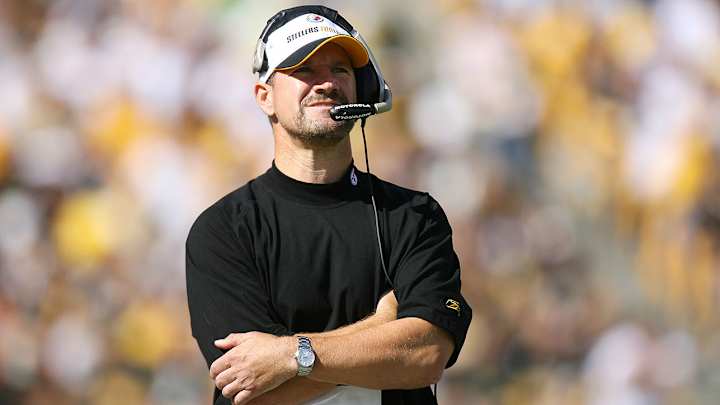Bill Cowher Preaches Prevention After His Wife's Death from Melanoma in 2010

Bill Cowher knew what melanoma was, but it wasn’t really on his radar before 2010.
He knew that, on a basic level, overexposure to the sun could increase his risk of developing the dangerous form of skin cancer, so he caked himself in sunscreen and donned a safari hat in the hot two-a-day camps in Latrobe, Penn. He also knew that Jim Johnson, the former Eagles defensive coordinator, died after his second bout with the cancer—which settled in his spine—in 2009.
But in Feb. 2010, he and his wife, Kaye, got a quick and unfortunate crash course in the cancer. A mole on Kaye’s skin had changed colors, and after a biopsy, they learned that not only was it melanoma, but that it had gotten into her bloodstream. Just five months later, Kaye passed away at the age of 54.
“We all hear about it but when it hits that close to home and you watch a loved one just deteriorate in front of your eyes, it’s very difficult and hard,” Cowher says.
Cowher and his wife met at N.C. State in 1976 when Bill was a linebacker for the Wolfpack and Kaye was a standout on the nationally ranked women’s basketball team. She went on to play in the Women’s Professional Basketball League as he spent a few years in the NFL, and the two married in 1981. A little more than a decade later, Bill was named the heir to Chuck Noll’s throne in Pittsburgh, and he made 10 playoff appearances, two Super Bowls and one world title in 15 seasons as the Steelers’ head coach.
About four years before Kaye’s diagnosis, Bill retired from coaching and joined CBS as a pregame analyst. He and Kaye moved to Raleigh, N.C., with their three daughters, where he fought off rumors about returning to coaching for years.
A fair-skinned blonde who used to work in the North Carolina tobacco fields as a youngster, Kaye was “the poster child” for something like melanoma, Bill says. According to the American Cancer Society, the lifetime risk of getting melanoma is about 1 in 40 for white people. About 87,110 new melanomas will be diagnosed this year and about 9,730 people will die of melanoma.
For Kaye, the disease took hold quickly. Most forms of melanoma is detectable and treatable, but those strong odds slip away once it enters the blood stream.
“In this case it was able to go through the blood stream and it settled into the nearest organ, which was her lung,” Bill says. “Which I didn’t realize that melanoma can sit in there for up to 15 years and be dormant. And what really activates it can be stress or anxiety related.”
Kaye had recently been diagnosed with early Alzheimer’s and was also going through menopause, “so it was the perfect storm,” Bill says.
How the Loss of His Mother Inspired Dak Prescott to Advocate Cancer Education
After his wife’s death and Johnson’s death just a year prior, Cowher quickly became one of the leading faces in sports on melanoma awareness. He joined the Melanoma Exposed campaign and frequently spoke on the topic. His pitch for prevention was perfect for a football coach.
Have a game plan in mind, he would say: Screen. Protect. Know. Tell. First, get an annual cancer screening and conduct self-exams as well as examining your partner. Protect yourself and family members from overexposure. Know the risk factors like family history and number of moles and tell your loved ones about staying protected.
“I think one of the biggest things I took away from it is it’s very detectable. To get your skin checked once a year is a very small price to pay for a lifetime. I’ve reiterated that with my girls and with anybody I talk to, getting your skin checked regularly.”
Though the lifetime risks are certainly lower for those who aren’t fair-skinned Caucasians, melanoma can affect anyone. Of course, Cowher has been even more vigilant with his skin protection since his wife’s death.
He’s not out in the sun much, and when he is on the water or playing golf, he always wears sunscreen with an SPF of 40 or higher and long-sleeve clothing that offers UV protection.
“The ozone is breaking down more and more each year; that’s a fact,” Cowher says. “That being said, we have to be more conscious of the sun and what it can do to your skin.”
